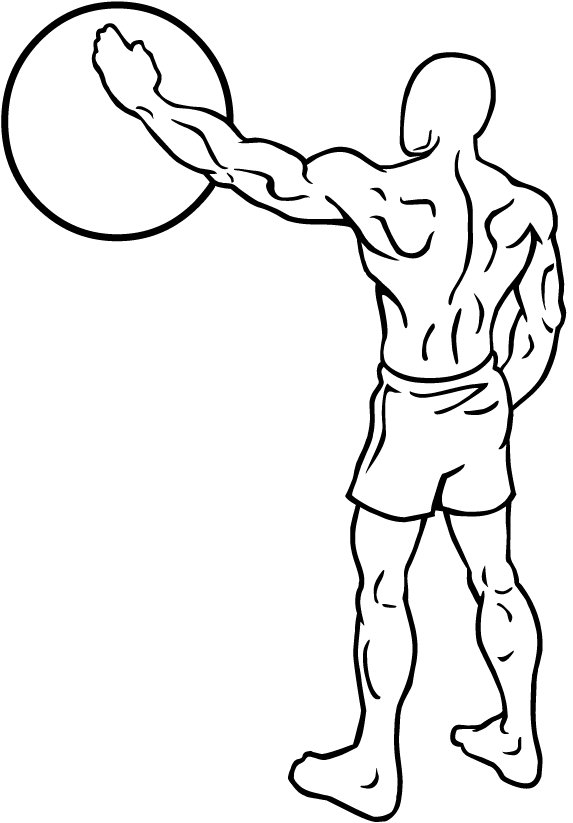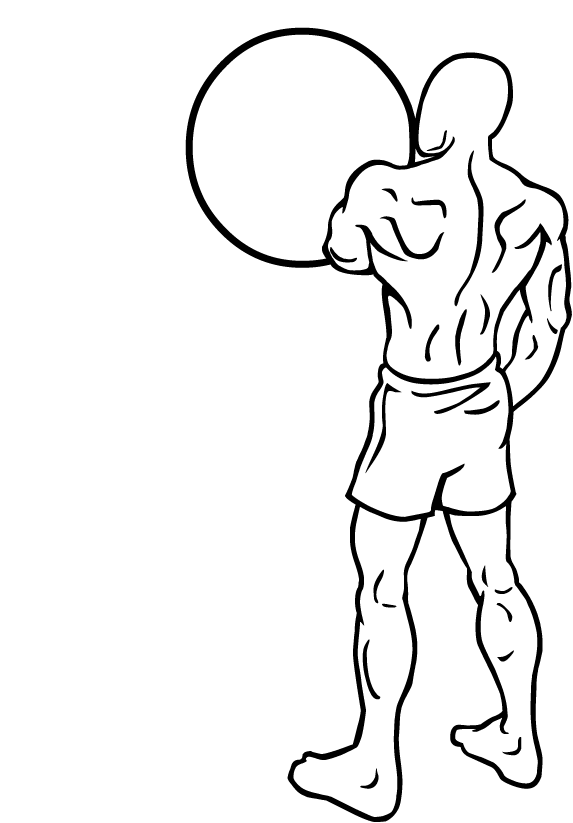Last Updated on September 30, 2022
Maintaining shoulder health is crucial for everyone, from athletes to office workers. One effective exercise to strengthen and stretch the rotator cuff muscles is the Ball Wall Circles. This exercise not only enhances shoulder stability but also improves mobility and prevents injuries. Let’s delve into the details of this exercise and explore additional strategies for optimal shoulder health.
Understanding Ball Wall Circles
Ball Wall Circles are a simple yet effective exercise aimed at strengthening the shoulder muscles, particularly the rotator cuff. Here’s how you can perform this exercise:
- Starting Position: Stand upright with your feet shoulder-width apart. Hold a Swiss ball at chest height against a wall.
- Execution: With your left hand, roll the ball in small circles against the wall. Keep your arm fully extended with a slight bend in the elbow.
- Reverse and Switch: After a few rotations, reverse the direction of the circles. Then, switch arms and repeat the process.
Tips for Effective Execution
- Posture: Maintain a good upright posture throughout the exercise to maximize its benefits and prevent strain.
- Ball Inflation: Ensure the Swiss ball is adequately inflated to allow for smooth, rhythmic circles.
The Benefits of Ball Wall Circles
Ball Wall Circles offer numerous benefits, including:
- Improved Shoulder Stability: By engaging the rotator cuff and surrounding muscles, this exercise enhances shoulder stability, reducing the risk of injuries such as impingement or tendonitis.
- Increased Mobility: The circular motion helps in loosening up the shoulder joint, increasing its range of motion and flexibility.
- Strengthened Muscles: Regular practice strengthens the deltoids, trapezius, and serratus anterior, contributing to overall upper body strength.
Complementary Exercises for Shoulder Health
In addition to Ball Wall Circles, incorporating a variety of exercises can further enhance shoulder health:
- Arm Pendulum: This exercise involves swinging your arm like a pendulum to improve shoulder mobility and relieve tension.
- Passive Rotations: Using a stick, perform internal and external rotations to stretch and strengthen the shoulder muscles.
- Crossover Arm Stretch: Stretch your arm across your chest to alleviate pressure on the elbow and extend the shoulder muscles.
- Sleeper Shoulder Stretch: Lying on your side, use your free hand to gently pull the bent arm down, stretching the upper back muscles.
Preventing Shoulder Injuries
Preventing shoulder injuries requires a holistic approach that includes:
- Balanced Workouts: Ensure your upper-body strength sessions are balanced to prevent muscle imbalances that can lead to injuries.
- Controlled Movements: Exercise at a reasonable pace with proper form to avoid unnecessary stress on the shoulders.
- Warm-Up and Stretching: Always warm up and stretch before and after workouts to prepare the muscles and facilitate recovery.
Advanced Techniques for Athletes
For athletes, incorporating sports-specific exercises can bridge the gap between conventional resistance training and competition readiness:
- Plyometrics for the Shoulder: These exercises involve medicine balls and mimic sports-specific movements, providing eccentric training for the rear-shoulder and external rotator muscles.
- Scapula Stability Exercises: Exercises like the Scapula Ball Push on Wall stabilize the shoulder girdle and enhance scapular control, crucial for athletic performance.
Ball Wall Circles are an excellent exercise for maintaining and improving shoulder health. By incorporating this exercise into your routine, along with complementary exercises and injury prevention strategies, you can achieve stronger, more flexible shoulders. Whether you’re an athlete or someone looking to improve overall fitness, these exercises provide a comprehensive approach to shoulder wellness.








